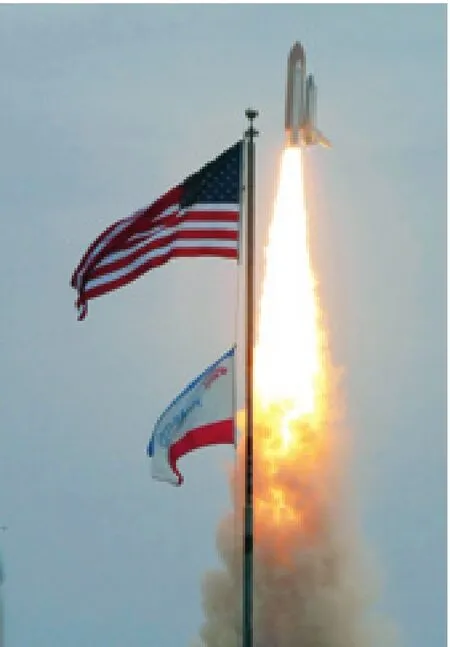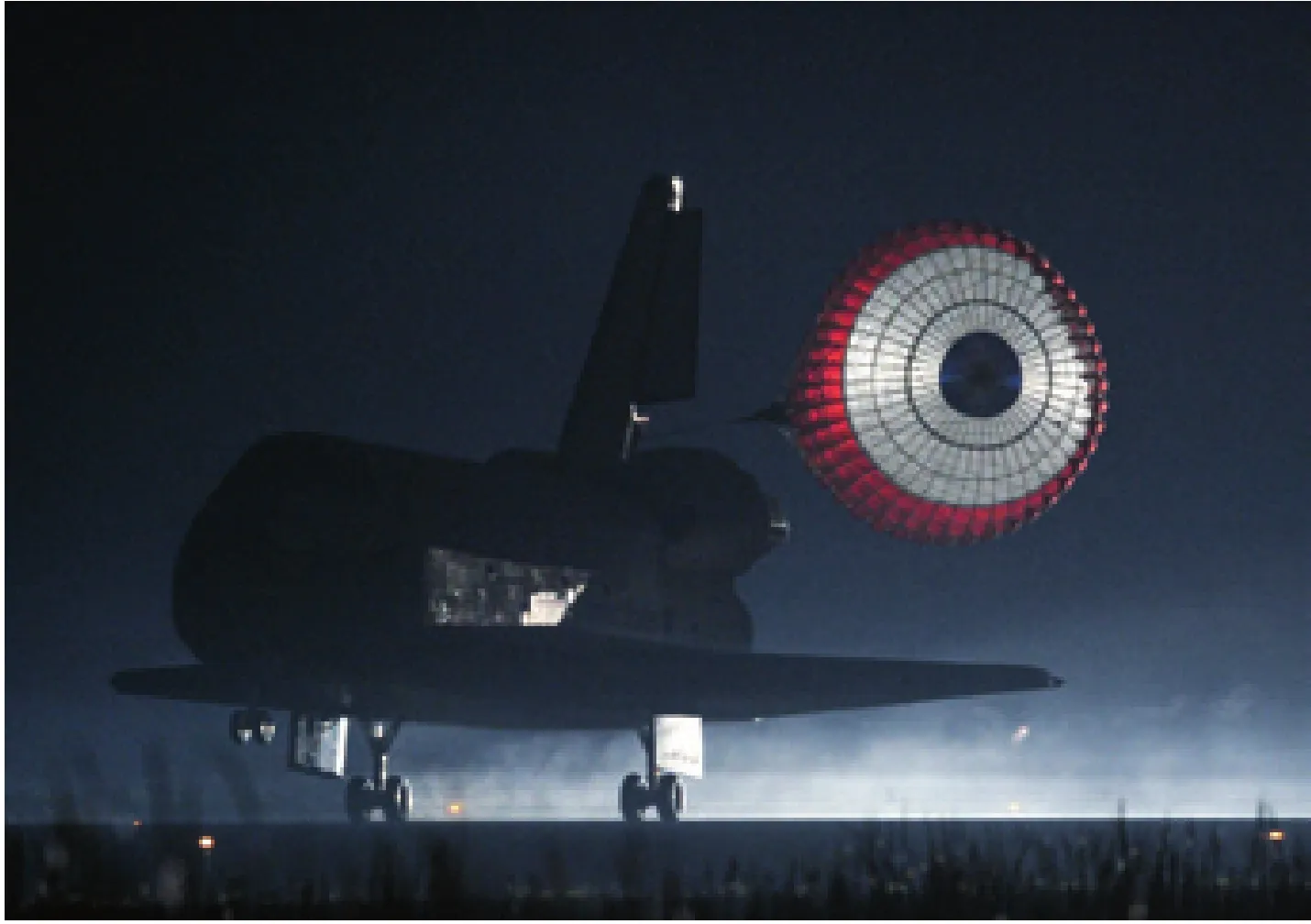Back Down to Earth
2011-10-14ByTONGYANCHUNZHANGBING
By TONG YANCHUN & ZHANG BING
Back Down to Earth
By TONG YANCHUN & ZHANG BING
After three decades of triumphs and tragedies, the United States’ iconic space shuttle program comes to an end

HUA

HUA/AFP
The space shuttleAtlantisblasted off for its last mission on July 8. Carrying four astronauts, the 26-year-old shuttle streaked into the sky from the Kennedy Space Center for the final time. The flight marked the end of the United States’ space shuttle program.
End of an era
The United States began to develop space shuttles in 1972. Six space shuttles were eventually built:Enterprise,Columbia,Challenger,Discovery,AtlantisandEndeavour. Among those,Enterprisewas a trial shuttle tested in 1977, and in 1981,Columbiabecame the first space shuttle to leave Earth’s atmosphere.
The success of the space shuttle program is an important milestone in the development of space technology. As the world’s frst reusable manned spacecraft, the shuttle represents the height of human achievement in terms of space fight.
Of course, since the frst space shuttle lifted off 30 years ago, a number of problems and flaws with the shuttle have also been exposed. Ultimately, economic effciency and safety were the major reasons behind the U.S. Government’s decision to abandon the shuttle program and focus its attention on a new manned space transportation system.
The main purpose of the U.S. space shuttle program was to reduce the cost of space flight through the use of a reusable vehicle and to increase the frequency of manned fights to space.
The space shuttle, however, did not succeed in realizing these initial goals. From 1981 to 2011, five space shuttles made 135 fights in all. On average, shuttles few five times a year, far from the target of 25 launches per year. Moreover, the space shuttle program severely exceeded its original budget. Developing the shuttle alone cost nearly $2 billion (at 1970s rates) more than originally planned.
And while it was expected that each shuttle launch would cost $38 million, when the space shuttle fnally entered service, the actual expenditure on each flight was $150 million (at 1980s rates). In recent years, expenditure on each launch has reached $400 million to $500 million.
The shuttle program also performed below expectations in terms of safety and reliability. On January 28, 1986, space shuttleChallengerexploded moments after its takeoff, killing all seven of its crew. Seventeen years after theChallengertragedy, space shuttleColumbiacrashed on its return voyage on February 1, 2003, and seven crew members lost their lives. As the shuttles continued to serve the U.S. space program into the 2000s, safety became an increasingly serious concern and the termination of the program became inevitable.
New vision
In recent years, the United States has focused on promoting the development of a more commercial manned space transportation system. In 2004, the George W. Bush administration outlined its plans for space exploration in the Vision for SpaceExploration policy paper.
As per this vision, new manned launch vehicles and spacecraft will take over the responsibilities of the space shuttle. This next generation of vehicles is also intended to facilitate the United States’ ambitions to return to the moon by 2020. However, a fveyear lag is expected between the retirement of the shuttle and the development of a new manned space transportation system.
Anticipating a gap between its space transportation platforms, NASA proposed in 2005 that a commercial transportation system fulfll the task of taking deliveries to the International Space Station.
In 2006, NASA opened tenders for the development of its commercial orbit transportation service. Currently, two transportation systems are under development: the Falcon 9 launch vehicle/Dragonspacecraft and the Taurus II launch vehicle/Cygnusspacecraft. These private sector systems are scheduled to enter service in 2015. The Falcon 9 rocket, developed by the Space Exploration Technologies Corp., has made trial fights with theDragontwice. The system can deliver a payload of 10.5 tons into the low-Earth orbit, at a launch price of only $45.8 million to $51.5 million. The Taurus II/Cygnus system, developed by the Orbital Sciences Corp., is scheduled to have its frst launch later this year. It will be able to lift 5.75 tons into space.
The United States also plans to develop heavy launch vehicles to realize its ambitions of manned deep space exploration. In 2005, the Bush administration launched the Constellation Program with the aim of sending astronauts to the moon.
As part of this program, the United States began developing the Ares I crew launch vehicle, the Ares V cargo launch vehicle, the Altair lunar lander and the Orion manned spacecraft. The low-Earth launch capability of the Ares I was projected to be 25 tons, and the project’s design incorporated a number of enhanced safety features.
But in 2010, faced with severe fiscal deficits, overspending and lagging progress, the Barack Obama administration cancelled the Constellation Program and gave up the development of the Ares launch vehicle.
The United States, however, has not given up its ambitions for manned space fight. In April 2011, Obama proposed the use of heavy-lift rockets to send astronauts to visit an asteroid by 2025. The current U.S. administration has also suggested the mid-2030s as an approximate date for sending astronauts to orbit Mars and returning them safely to Earth, and a landing on Mars will follow. A new generation of heavy-lift launch vehicles is now being developed, and these vehicles will have low-Earth orbit launch capabilities of 130 tons.
Despite ambitious future plans, for the time being the United States is without a regular low-Earth orbit manned transportation platform and hopes to use Russia’sSoyuzspacecraft during this transition phase. TheSoyuzis a much lower-cost platform than the space shuttle. NASA has ordered six seats on theSoyuzfrom 2013 to 2014, at a cost of $55.8 million per seat, and 12 seats from 2014 to 2015, at a cost of $62.7 million per seat.
Space exploration has become a collaborative affair. The United States now cooperates with Russia, Europe, India and Canada in different space-related felds. This new international approach has helped reduce costs.
Today, only the United States, Russia and China possess the ability to send astronauts to the space. Assessing China’s space program, the Review of U.S. Human Spacefight Plans Committee said in a 2009 report, “China offers signifcant potential in a space partnership.”
China has already developed the capacity for manned space flight and is now developing space rendezvous and docking capabilities. Despite its temporary suspension of manned space flights, the United States still leads the world in terms of space exploration. China has a long way to go, particularly in terms of space station construction and the development of a reusable launch system.
It is safe to say the U.S. space shuttle’s retirement will provide opportunities for space technology cooperation between China and the United States.
Tong Yanchun is a researcher with the Beijing Institute of Aerospace Long March Scientific and Technical Information; Zhang Bing is a researcher with the Beijing Institute of Astronautic System Engineering

XINHUA/AFP
